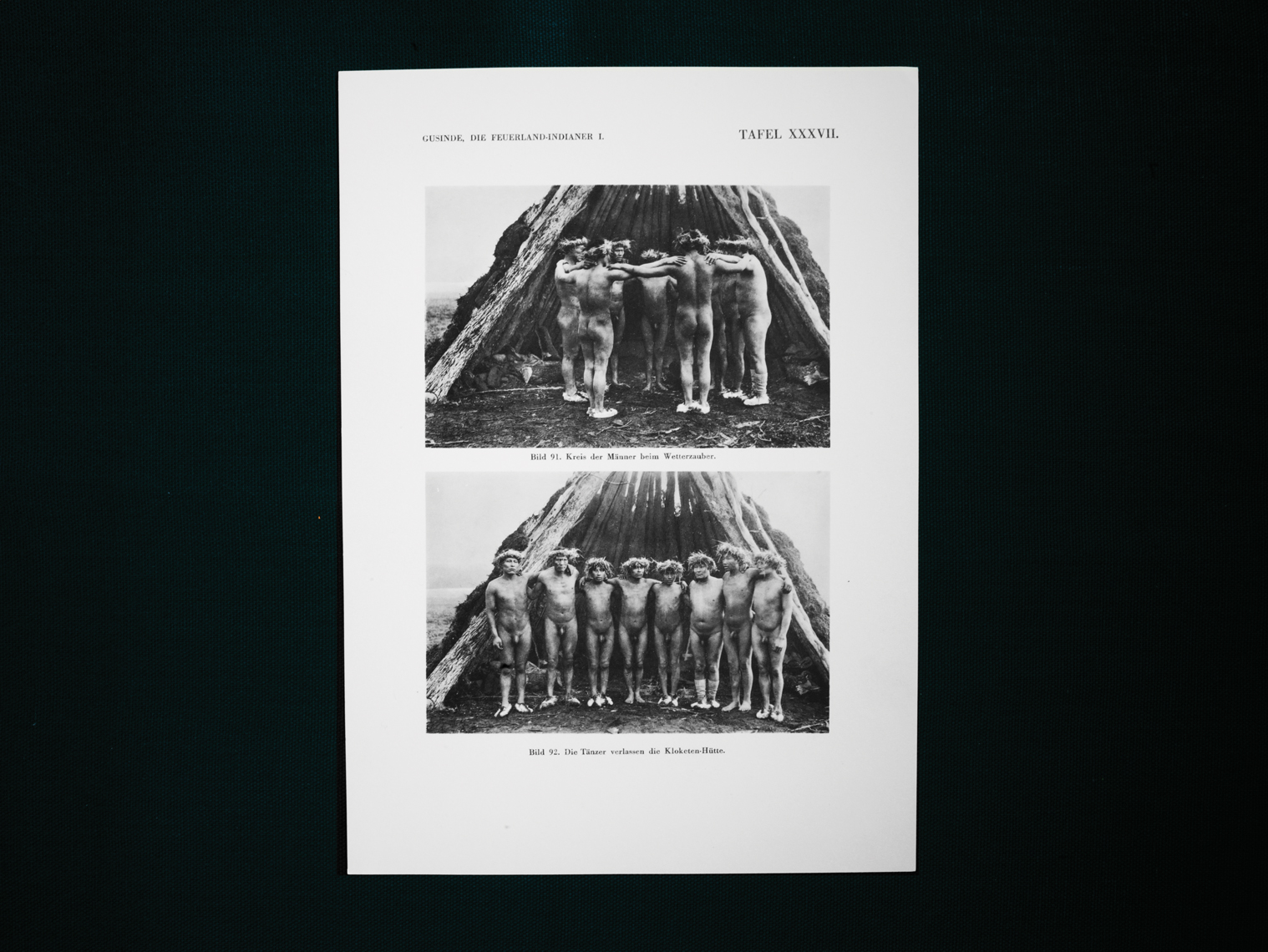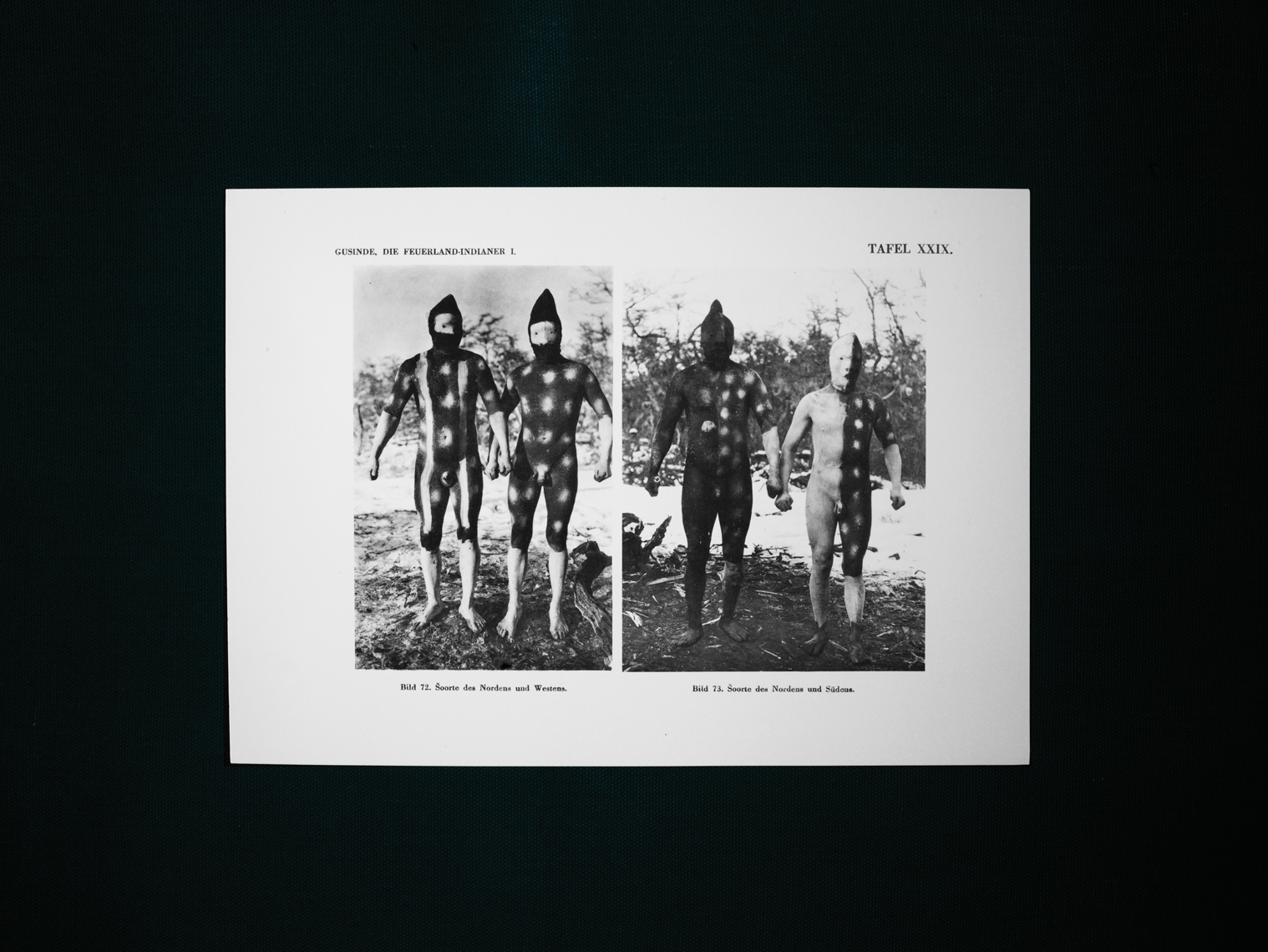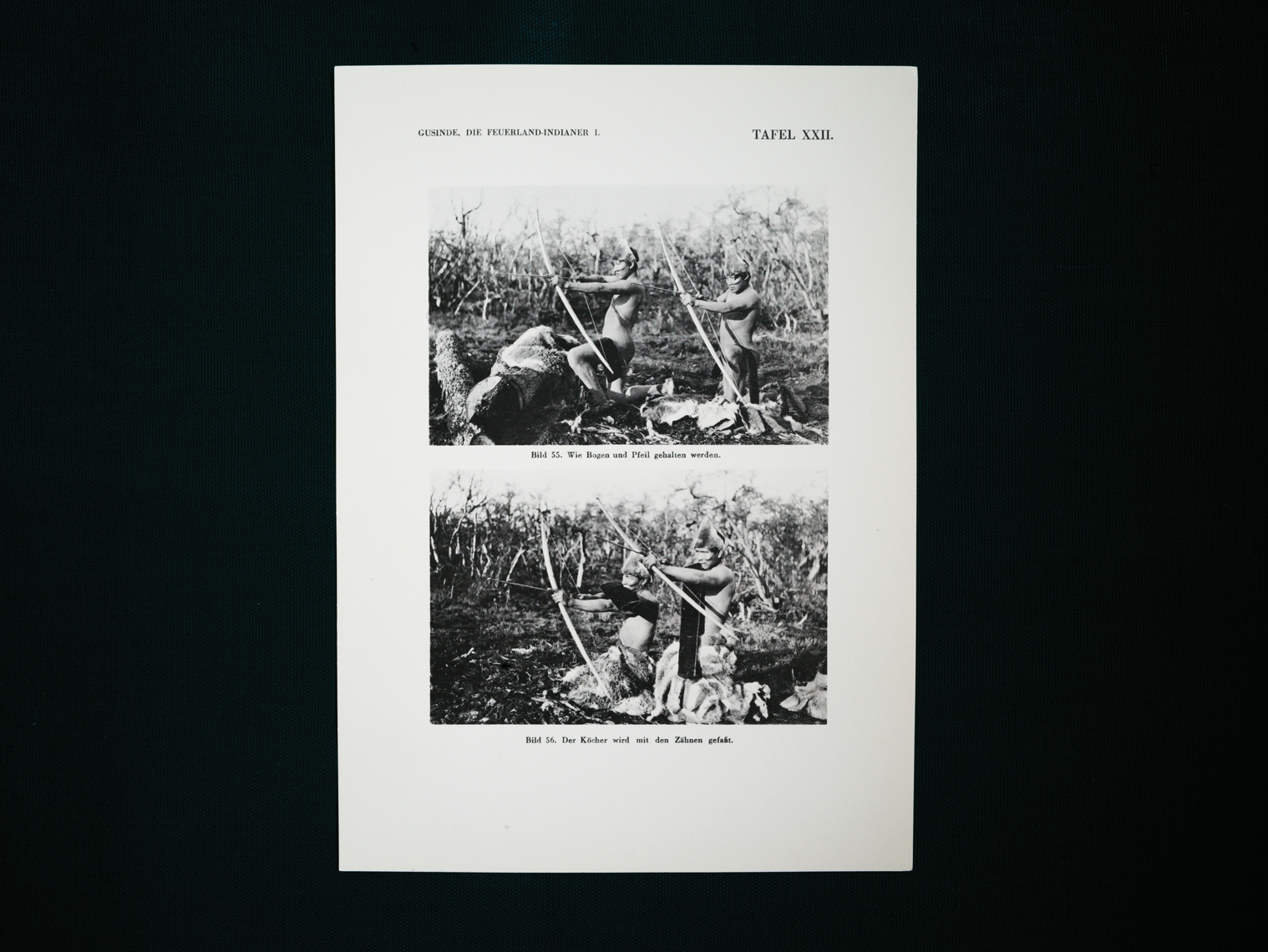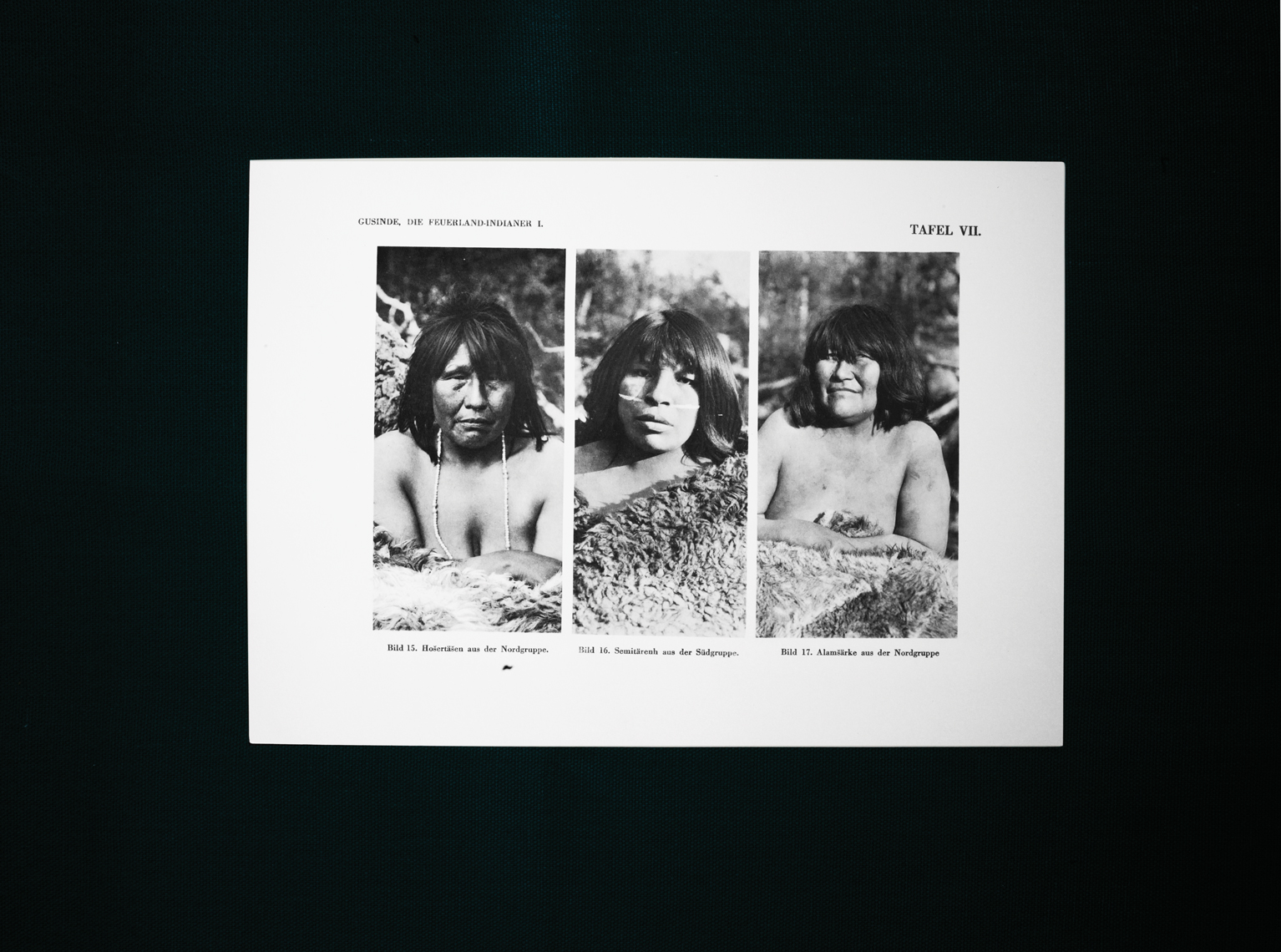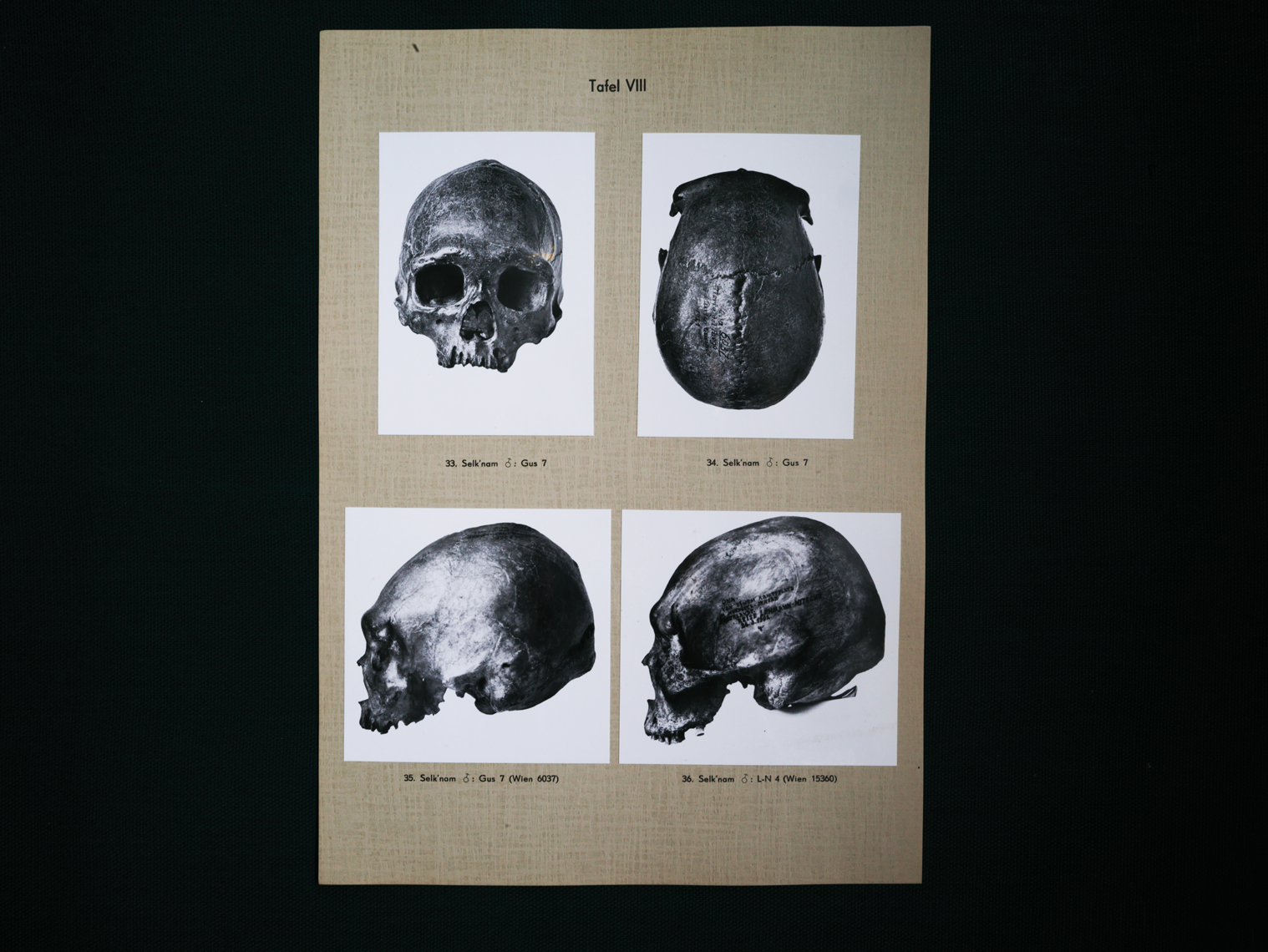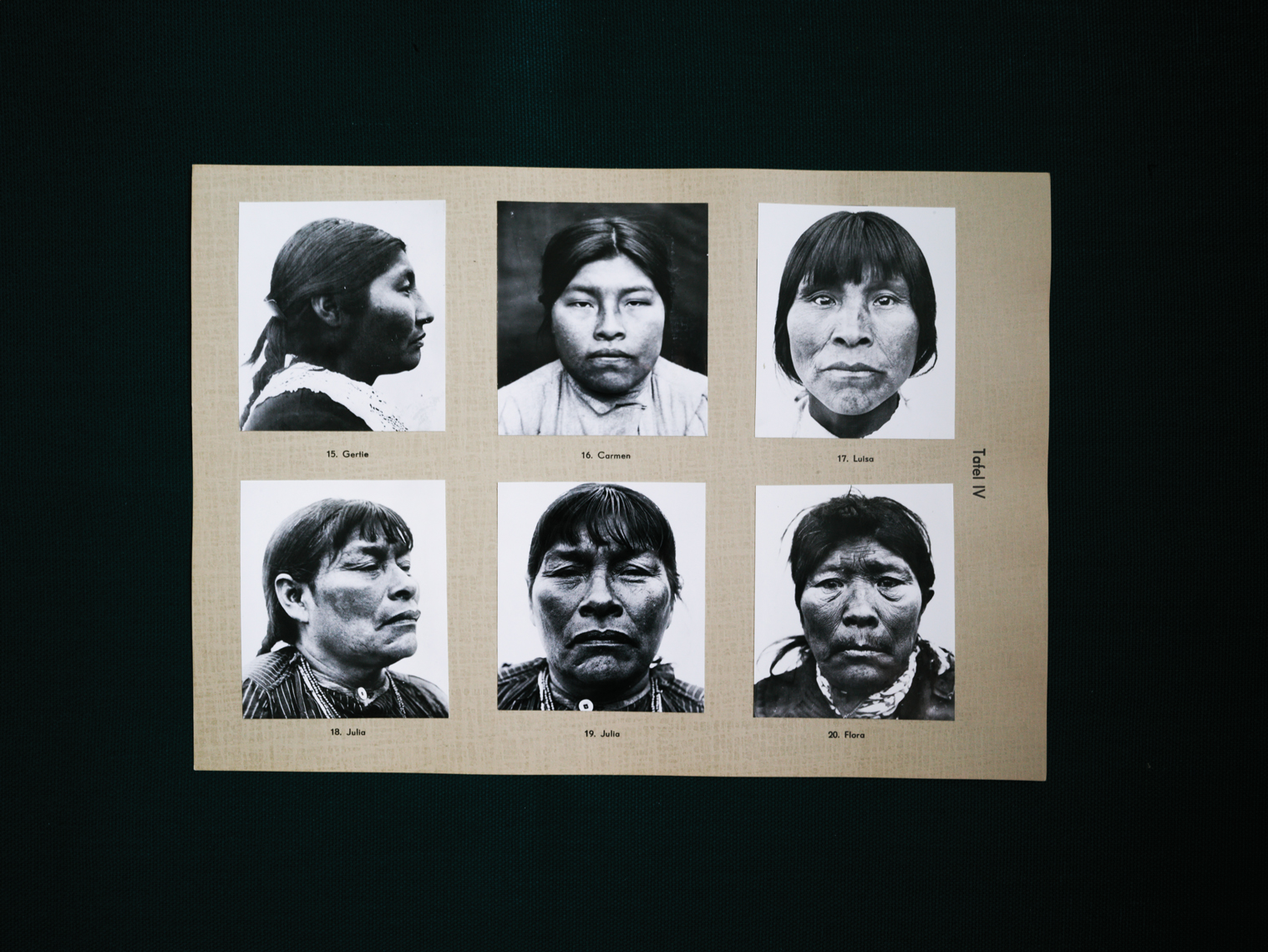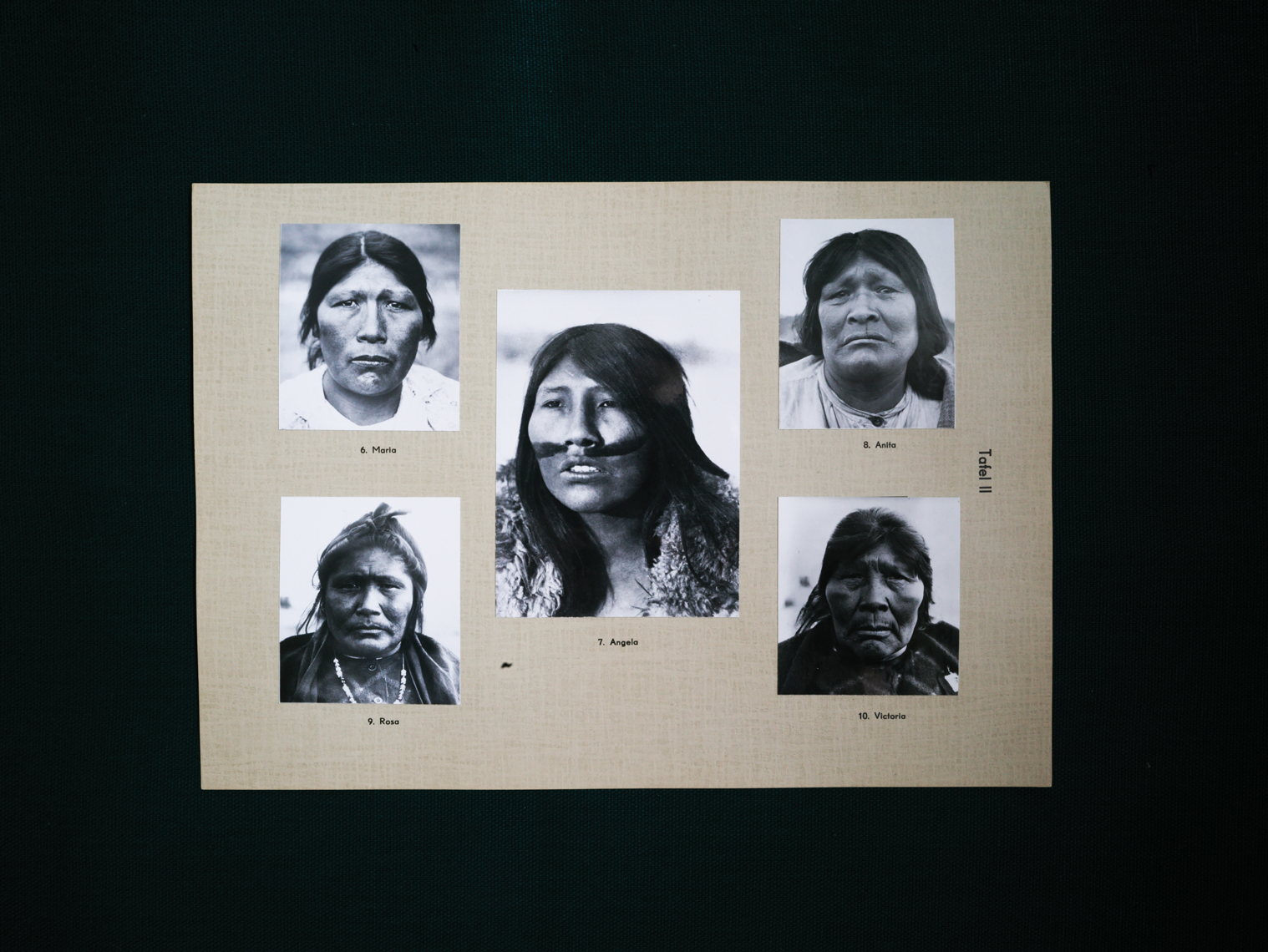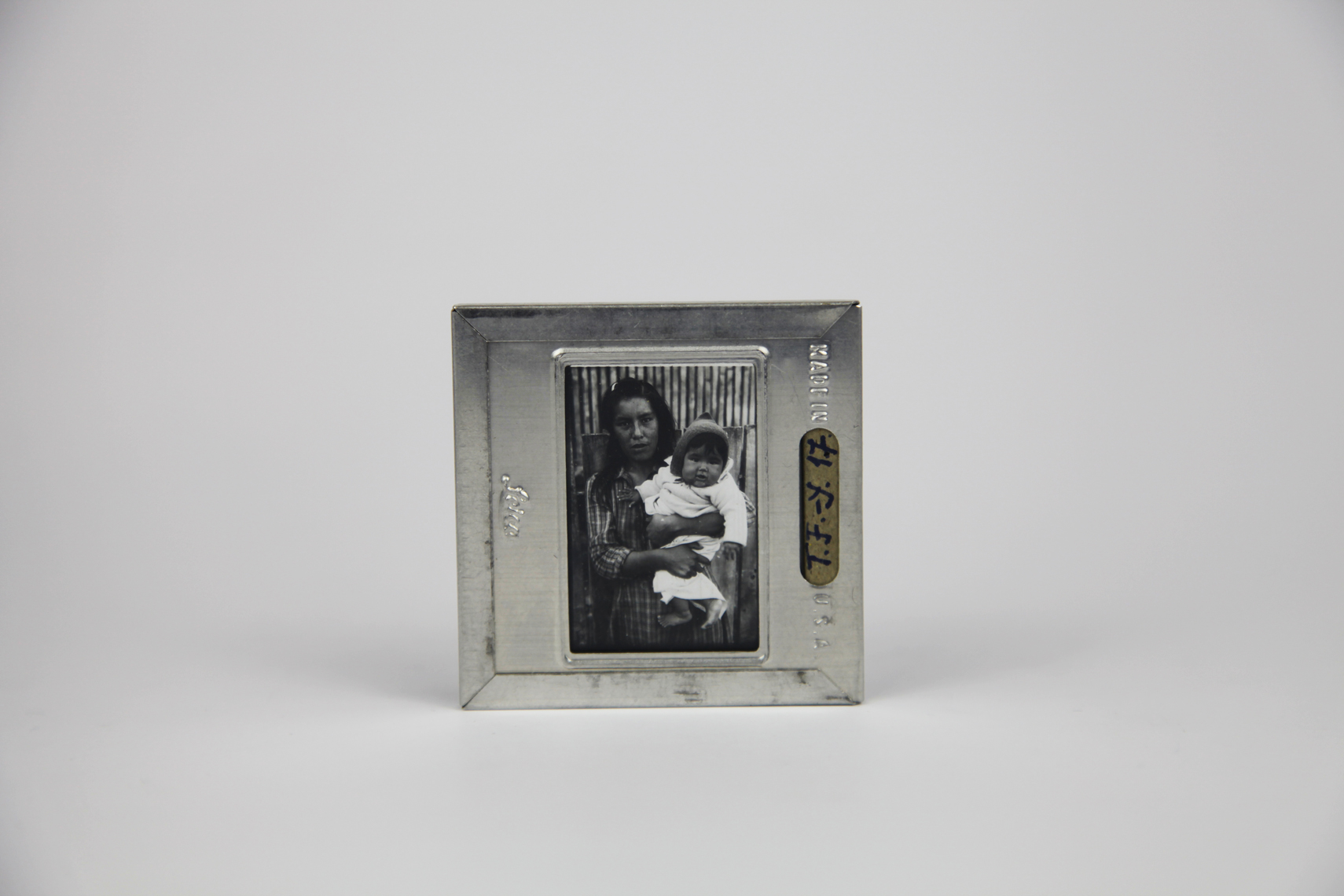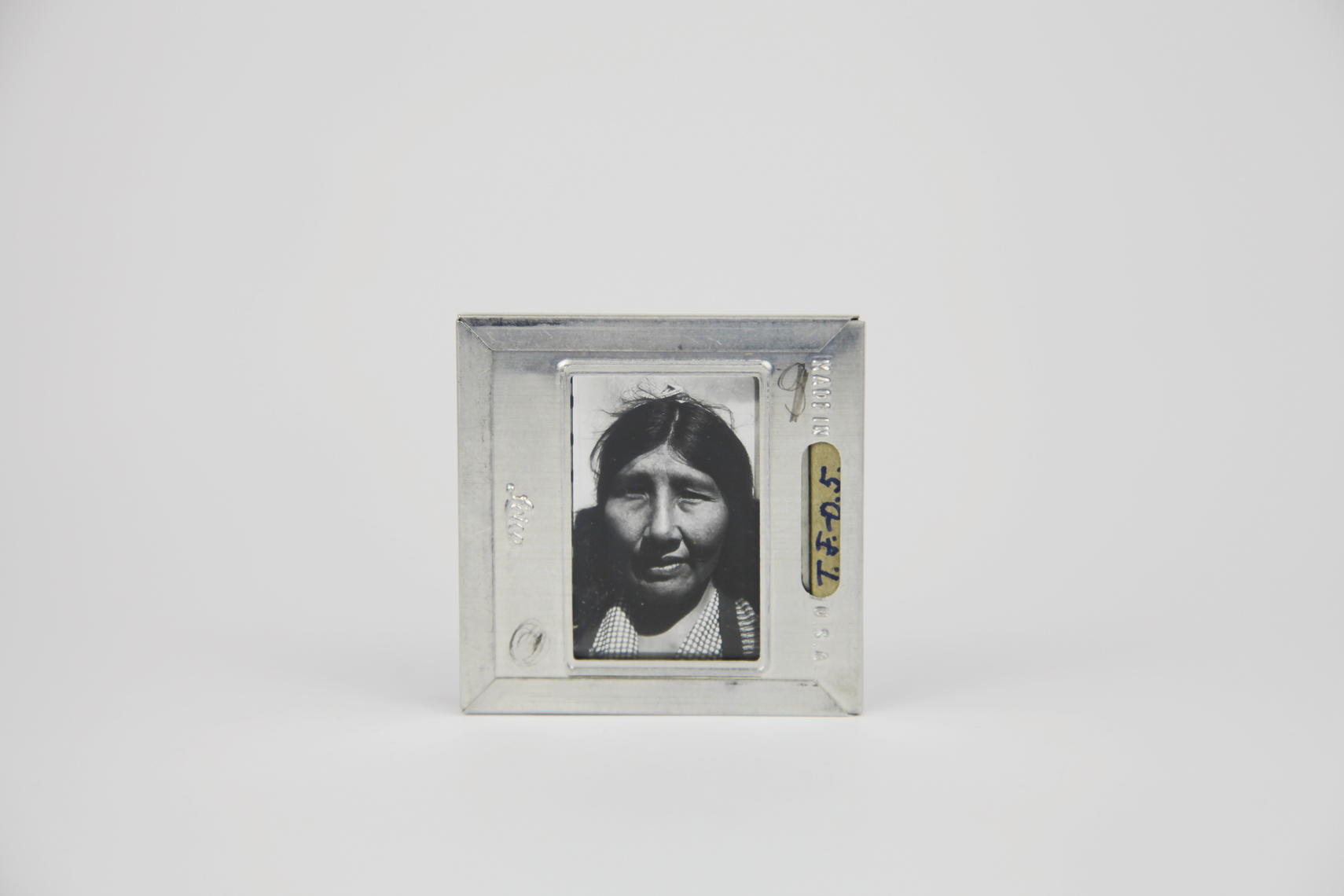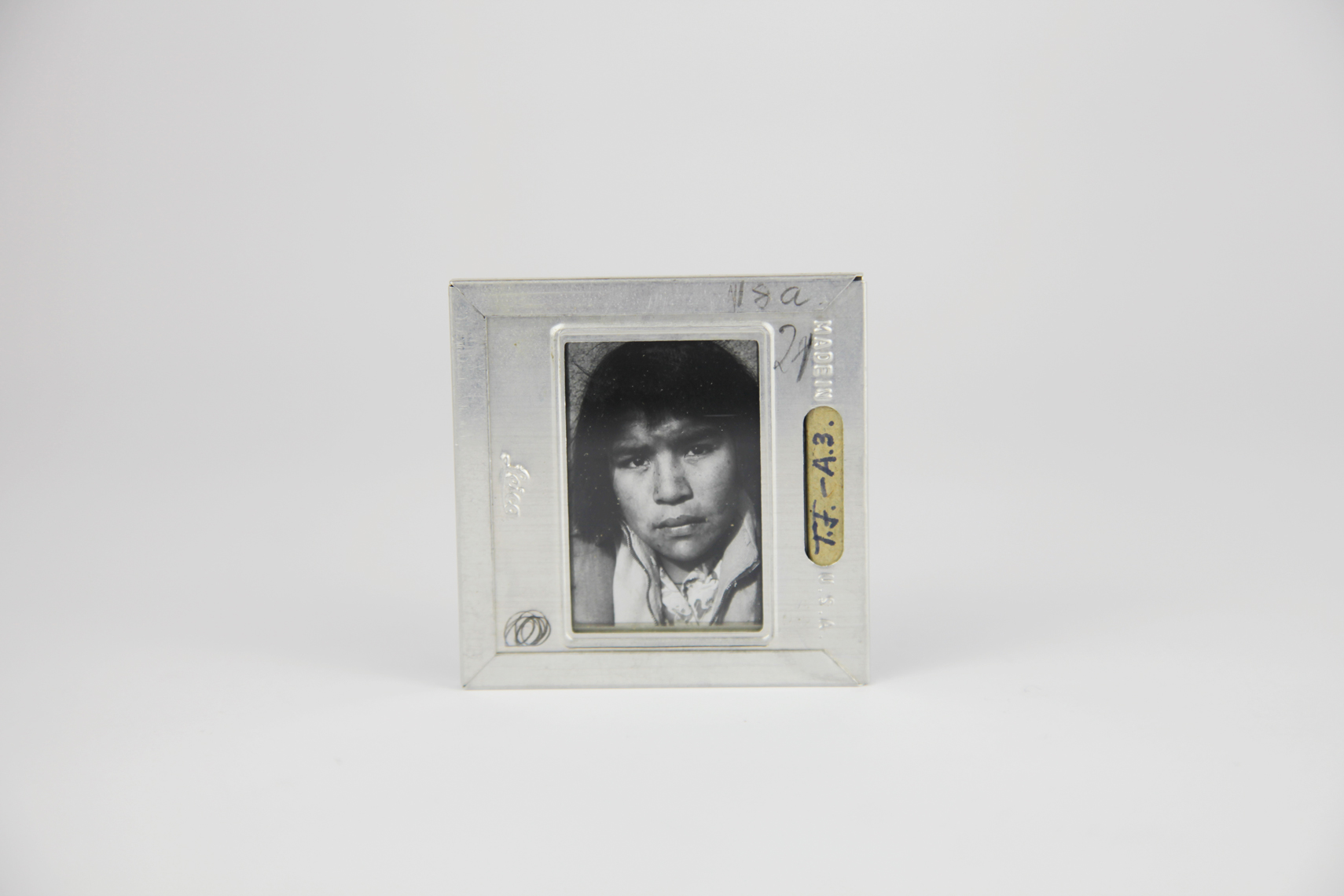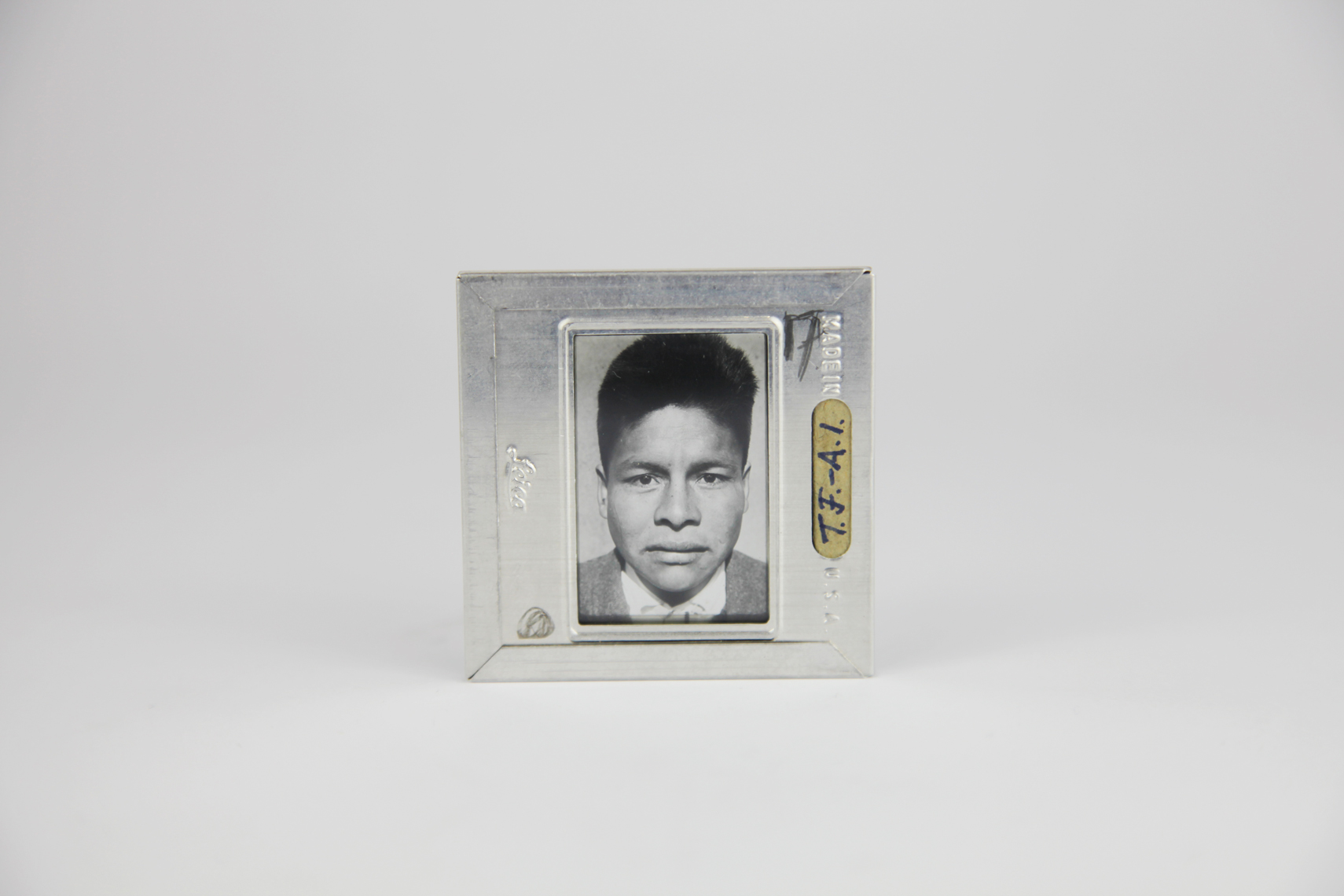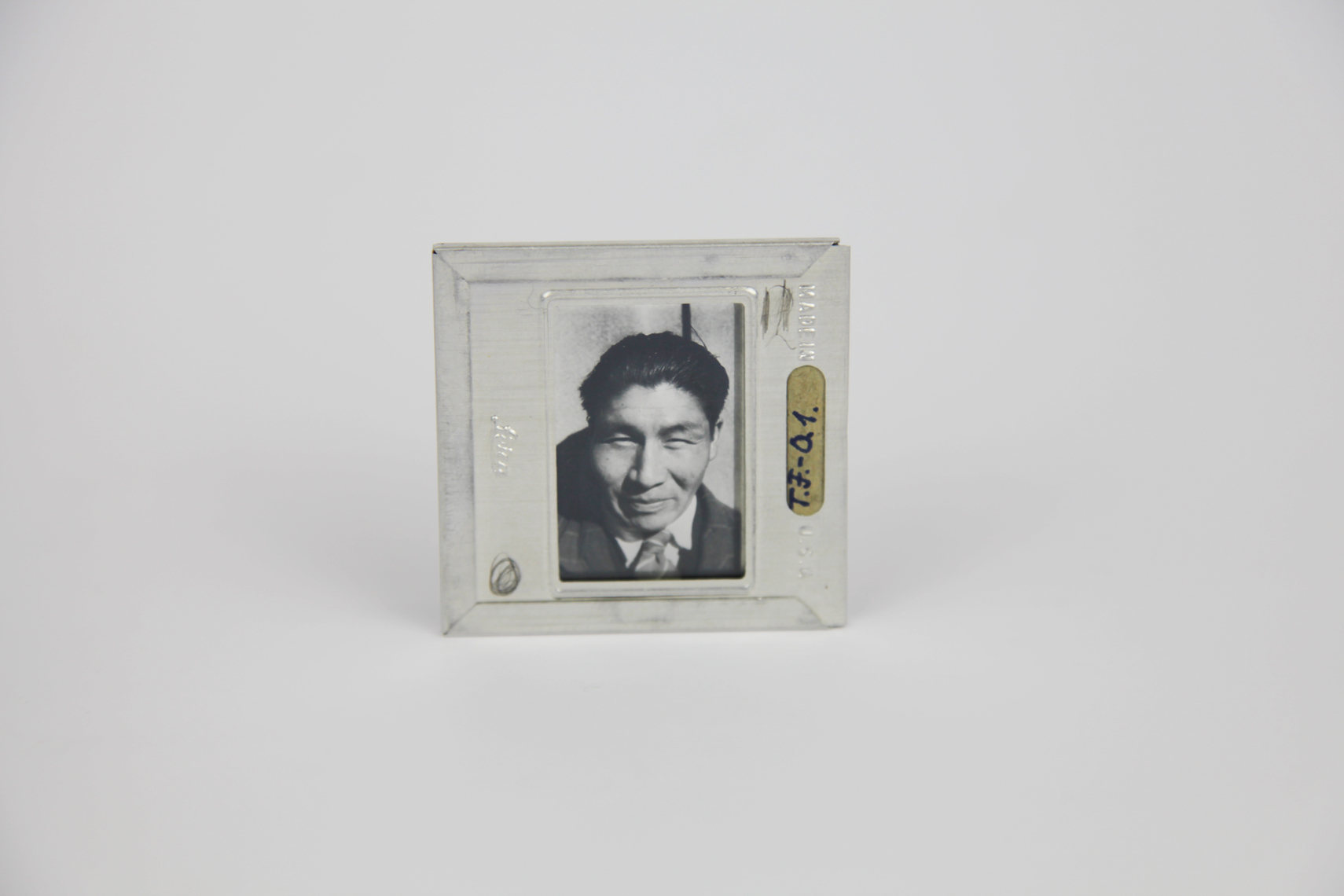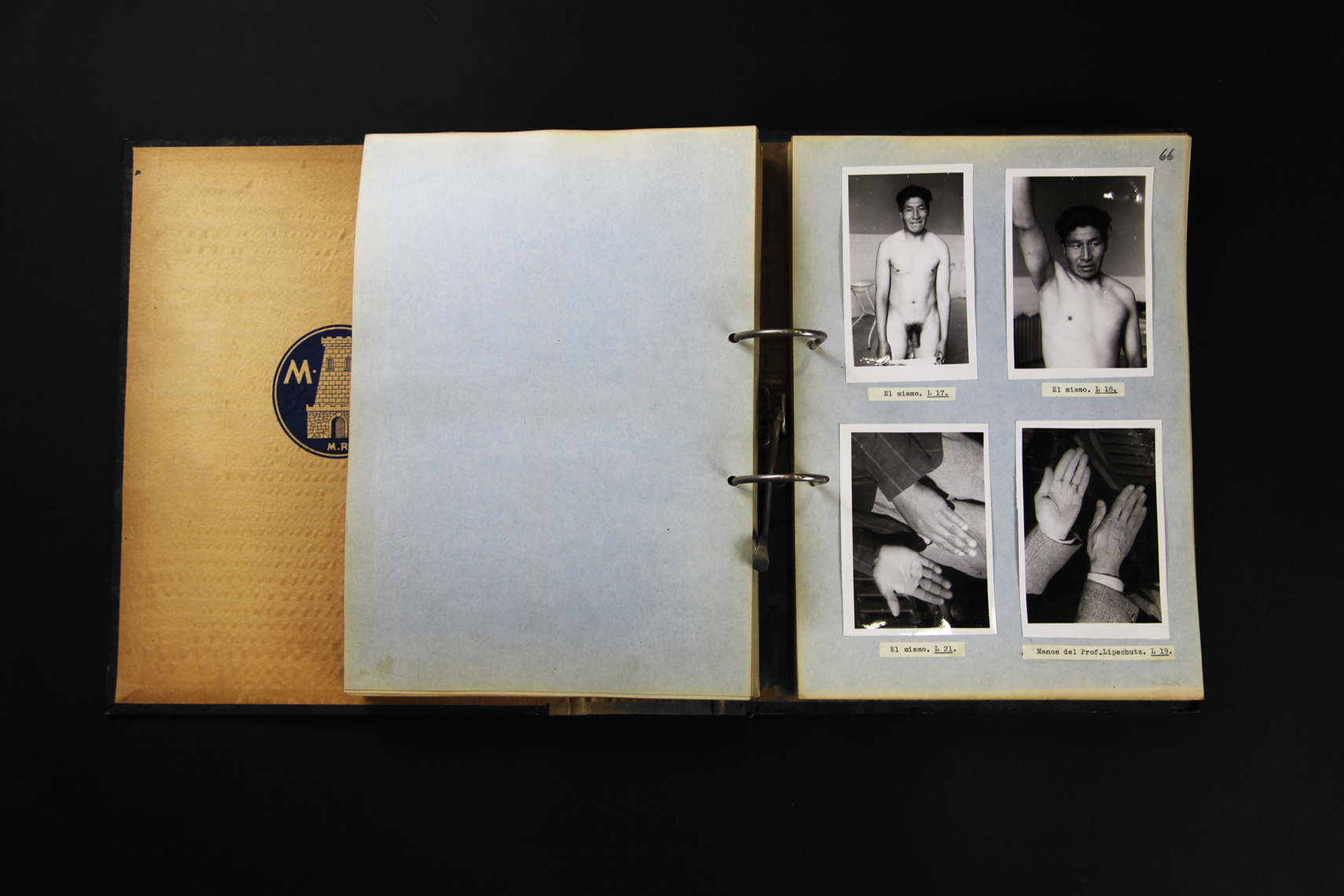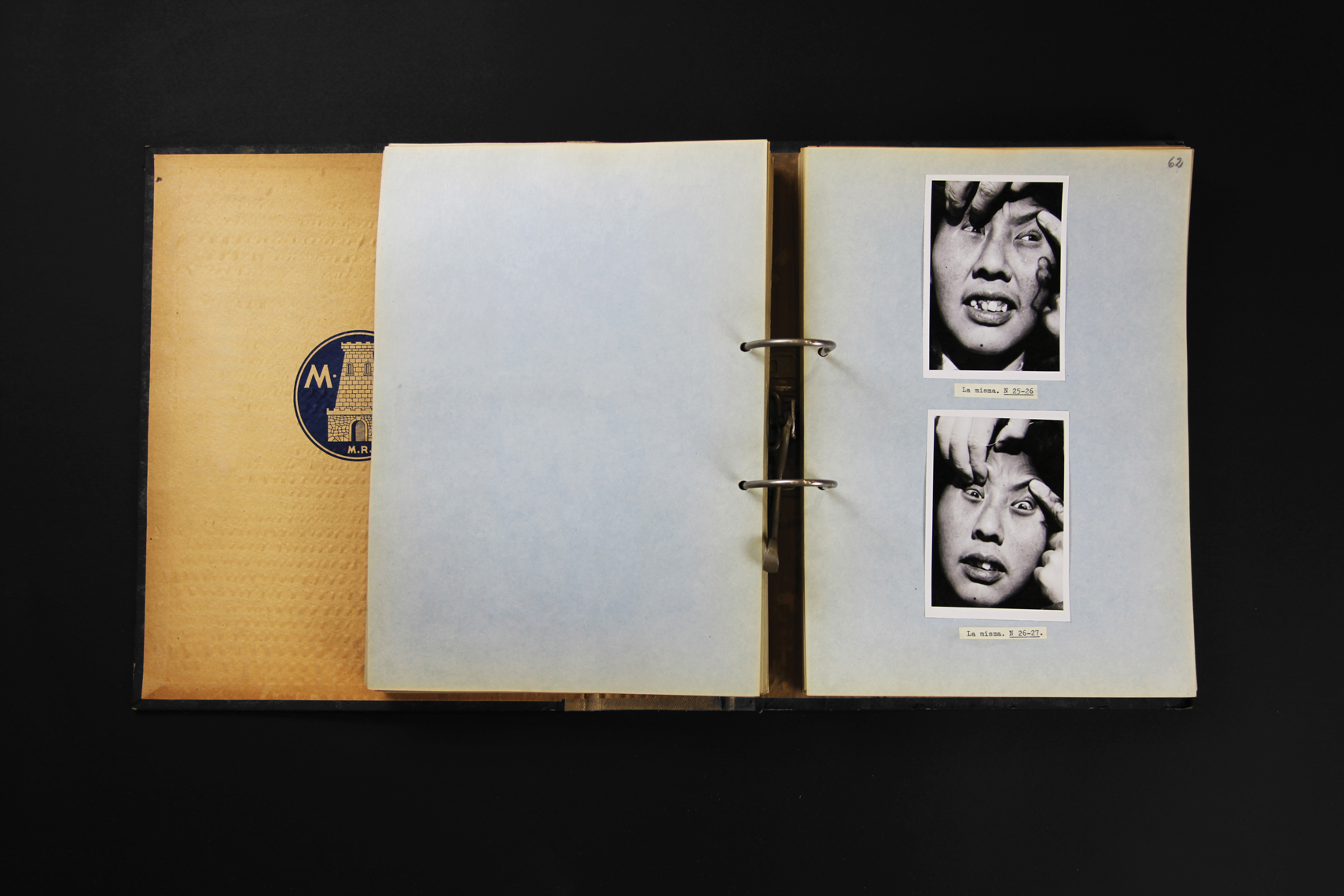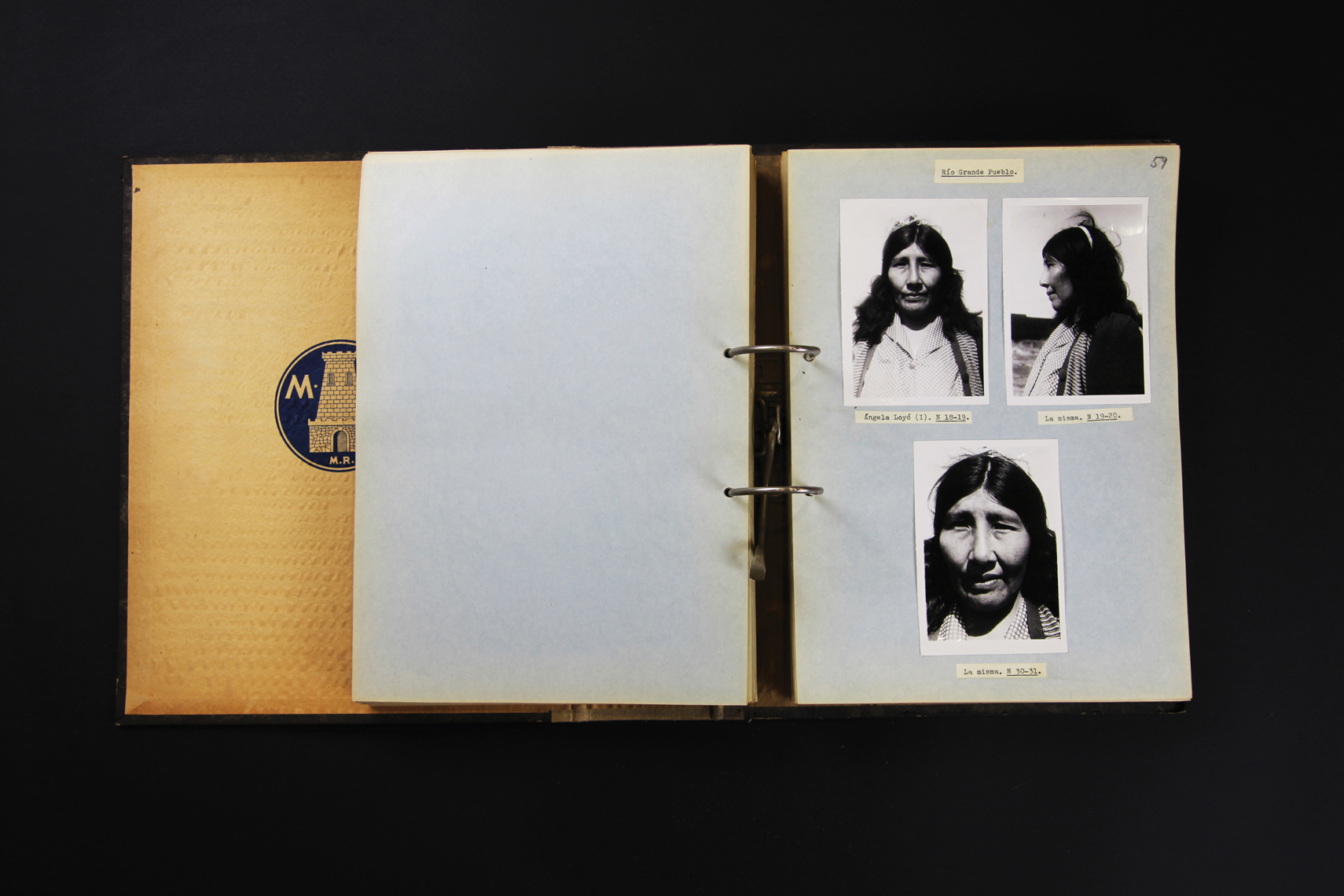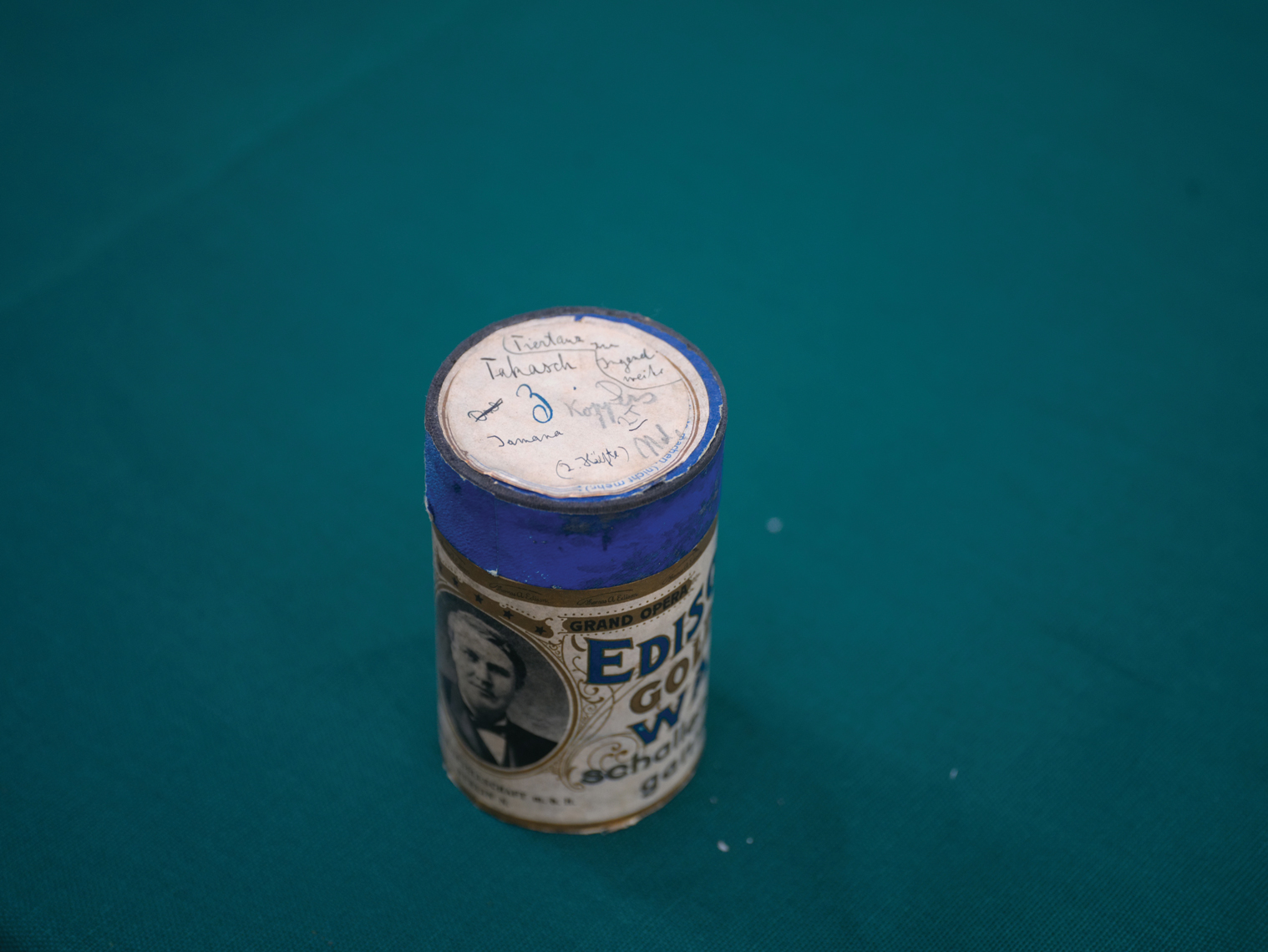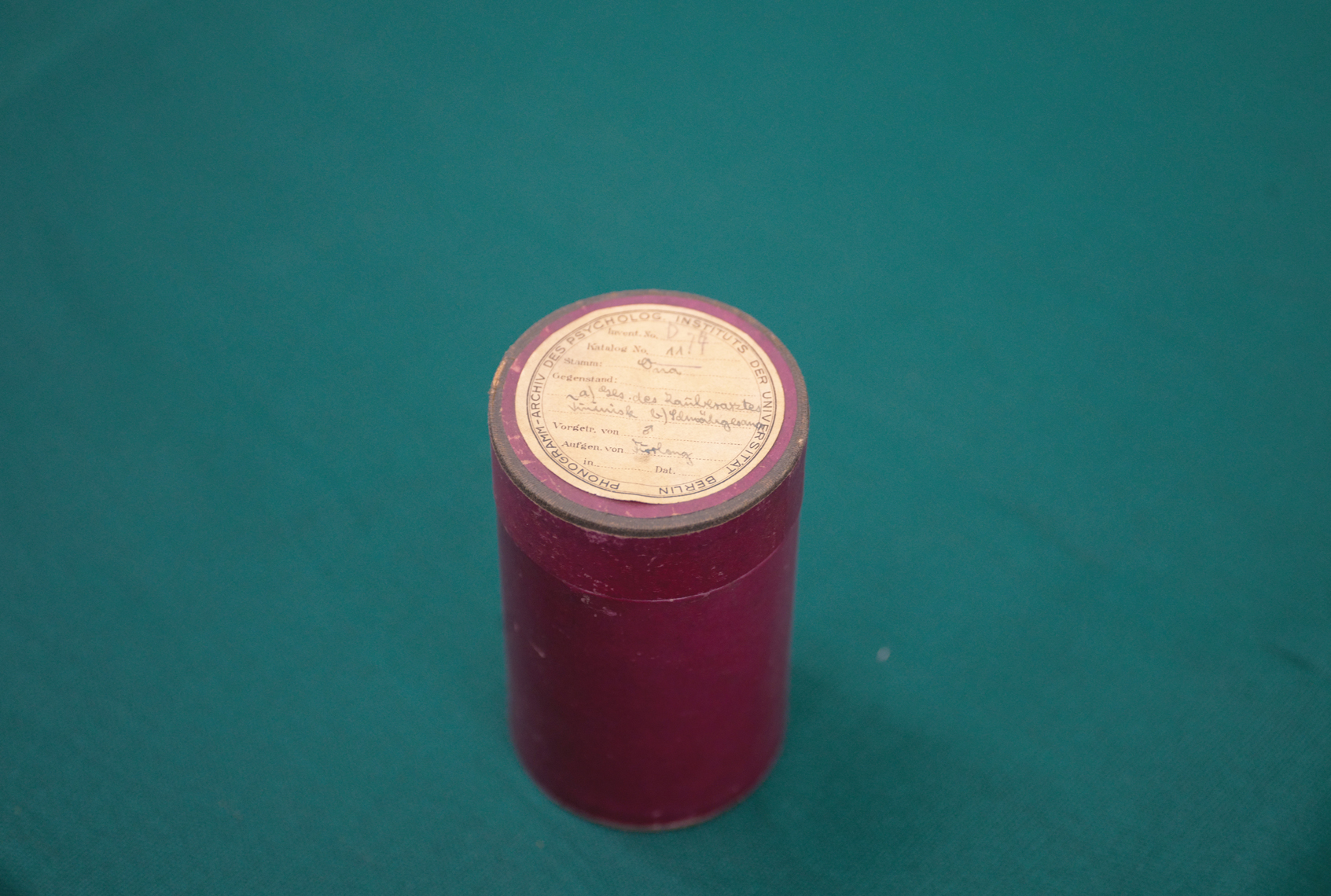Aesthetics of Extinction, Aesthetics of Conservation: The Chilean Pavilion at the 59th Venice Art Biennale
Turba Tol Hol-Hol Tol—the Chilean Pavilion at the 59th Venice Art Biennale in 2022—was devoted to the environmental conservation of the peatlands of Tierra del Fuego, an archipelago spanning what are now the southernmost points of Chile and Argentina. The Selk’nam people inhabited these lands for thousands of years, up until the late 19th century when two successive waves of extermination nearly wiped them out. The first wave was perpetrated by colonial capitalism. The Selk’nam people were hunted with rifles or killed by imported diseases, their territory was parceled and fenced with wire, and the environment was ravaged. The triple alliance between private companies devoted to sheep farming, the Chilean state, and Catholic missionaries committed one of the most brutal genocides of the 20th century.
The second wave arguably had even more devastating consequences and was undertaken at the hands of modern social science. Equipped with new and persuasive narrative techniques made possible by advances in photography and phonography, ethnographers in the 1920s hunted the Selk’nam people again, albeit this time with weapons of a different kind. These ethnographers selectively recorded the Selk’nam survivors and rituals they encountered and depicted them as the last pure examples of what they considered an exotic race, not only discounting the possibility of the community’s continued survival, but also disregarding what at that time had been rampant human trafficking of women and the forced adoption of Selk’nam children to replenish the scarce supply of domestic labor among colonial settlers.1
From their recorded traces, such enthnographers manufactured a narrative that portrayed Selk’nam survivors as the last living vestiges of an irreversibly vanishing “species.” It is a narrative that was widely circulated and broadly accepted, and its foretelling of the Selk’nam people’s demise became self-fulfilling. Media determined their situation, reversing the famous saying of the media theorist Friedrich Kittler. Ethnography, in effect, completed the extermination of the Selk’nam people that colonial capitalism had started, and in doing so exemplified the power of what anthropologist Joaquín Bascopé has referred to as the aesthetics of extinction.2
The peatlands of Tierra del Fuego—ancestral territory for the Selk’nam—contain one of the largest carbon reservoirs on Earth. A peatland, or peat bog, is a specific ecosystem, a kind of wetland that stores carbon that has accumulated for thousands of years in its layers of semi-decomposed organic matter. Indeed, peatlands store more carbon than any other ecosystem on the planet—more than all the forests in the world combined. In Patagonia, where Tierra del Fuego is located, peatlands are imperiled, as they are in most of the world. They lack almost any kind of environmental protection. Among other legal and aesthetic shortcomings, peatlands do not have the kind of presence in the collective imaginary that glaciers, mountains, and forests do. How do you claim protection for something that not only goes unseen, but also should remain so?
Equally invisible to techno-scientific memory has been the Selk’nam population itself.3 Their extinction was officially declared by the Chilean state in 2003, but since 2020 the Corporación Selk’nam Chile (Selk’nam People’s Corporation in Chile) has been in litigation with the government, battling for official recognition as a living Indigenous population.4 Through an active process of revitalizing—if not rebirthing—their language, the Selk’nam people are claiming their right to exist as a living culture. Likewise, peatlands require recognition as a living and fragile ecosystem to ensure their conservation for generations to come. Culture and nature remain deeply entangled in Tierra del Fuego, and both require new modes of being made visible. At the invitation of curator Camila Marambio, a group that included me, sound artist Ariel Bustamante, art historian Carla Macchiavello, and filmmaker Dominga Sotomayor collaborated on an exhibition for the Chilean Pavilion.5 We aimed to challenge the prevailing aesthetics of extinction by engaging in what we call the aesthetics of conservation.
EXTINCTION
Engaging with Tierra del Fuego through a new aesthetic meant situating ourselves within—and critically confronting—a long history of media production about, and appropriation of, the Selk’nam people. Much has been written about such photography and sound recordings and their archives, but I wanted to visit them firsthand to get a sense of their material aesthetics, understand their mode of circulation, and grasp the media rhetoric that has been used to colonize this territory for so many years. The power of those narratives rested in the archives, most of them located in Europe, and visiting them meant to experience for myself the materiality of media-techno-scientific extermination.
Photographs of the Fueguinos—the name for the Indigenous groups of Tierra del Fuego, which includes the Selk’nam—have circulated since the last decades of the 19th century: first when living human beings were put on display as “exhibits” at the Jardin Zoologique d’Acclimatation in Paris in 1881, and later when the images appeared in publications of the Mission scientifique française du cap Horn conducted by Paul Hyades, among others.6 But it was in the first decades of the 20th century that a real shift took place in anthropology and how ethnographers represented and reproduced images and sounds, particularly of the Selk’nam people.
By 1920, the Selk’nam population had suffered a steep decline, mostly due to the intentional extermination perpetuated by the region’s largest sheep farming company, the Sociedad Explotadora de Tierra del Fuego, to whom the Chilean government had granted a parcel of land that was more than half the size of Belgium.7 Sponsored by the Ministerio de Instrucción Pública (Chilean Ministry of Public Instruction) and working for the Museo de Etnología y Antropología de Chile (Museum of Anthropology and Ethnology in Chile), the German-Austrian priest and anthropologist Martin Gusinde traveled to Tierra del Fuego four times between 1918 and 1924 to document the Fueguinos. He was the first person to portray them as fragile remnants of a lost people on the verge of disappearing.8
Wielding a camera instead of a rifle, Gusinde was called the “shadow hunter” by the Selk’nam, while at the same time he described his position as shifting from “researcher” (Forscher) to “tribe-member” (Stammesmitglied).9 In images published in his massive monograph (three volumes of several thousand pages) and in sounds archived today in the Berlin Phonogramm-Archiv,10 we confront a most convincing media-rhetorical construction that operates to distance a supposedly exotic and primitive past from the present.11 Gusinde’s images were shown around the world and across scientific and artistic platforms over decades.12 The imaginary he constructed through his powerful photographs and ghostly phonographic recordings—his naming and individualizing the last “pure” survivors and his recording and reenacting of their traditional rituals—cemented the Selk’nam people’s seemingly inevitable extinction. Ever since, representations of the Selk’nam people have been bound by the rhetoric of such aesthetics of extinction, and the story of “the last one” has become a perverse yet seemingly inevitably repeating trope.
During the same period, the collapse of the Selk’nam population was also documented by civil servants who created and maintained an anonymous double-entry table to track their population decline, much in the same way animal species populations are recorded. No names or other supplementary data to identify people as individuals were collected, only numbers. Already in 1927, the director of the Museo de la Plata (Anthropological Museum of La Plata) in Argentina, German anthropologist Robert Lehmann-Nitsche, declared that “that ethnic unit [the Selk’nam] has been decreasing in number over the course of the last half-century to the point of being considered, today, as totally extinct, if we take into account the primitive characteristics.”13 And in an anthropometric study published in the Anales del Museo de La Plata, Lehmann-Nitsche documented and analyzed Selk’nam men and women living in the Salesian Mission in Río Grande, the data for which came from the same anonymous double-entry table. Unlike Gusinde’s expressive images, the discourse on the purity of race is here reduced to numbers from a table. The rhetoric of extinction, however, remains consistent.
Another example of this stochastic genealogy can be found in publications related to expeditions undertaken by Finnish geographer Väinö Auer in Tierra del Fuego between 1928 and 1929.14 Auer’s expedition was sponsored by the Finnish Forest Association after he had conducted research on the peat bogs in Canada the year prior, under the sponsorship of the Rockefeller Foundation. Beginning in 1928, he traveled to Tierra del Fuego to conduct one of the first systematic scientific documentation of the peat bogs in that region. Tierra del Fuego was being carefully observed using precise mapping, photography, and detailed section drawings during the 1920s. While ethnographers saw themselves as having found the last examples of humanity in its “primitive” state in Tierra del Fuego, natural scientists were tracking exotic botanic species. The land of Tierra del Fuego was for Auer’s expedition what the Selk’nam people were for Gusinde’s: a point of access to a pristine and culturally unpolluted past on the verge of disappearing.
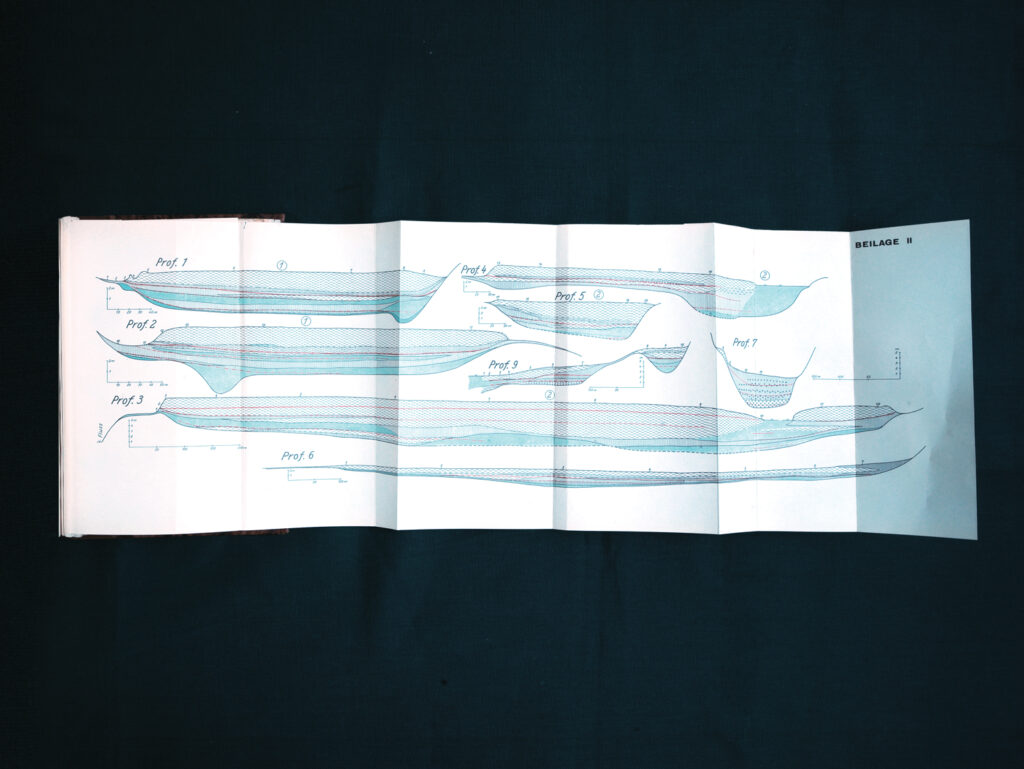
Section drawings depicting peat profiles documented during Väinö Auer’s expedition to Tierra del Fuego between 1928 and 1929.
So irresistible were the aesthetics of extinction, even to the natural sciences, that the first of the 10 articles in the expedition’s final report was dedicated to the Selk’nam. Entering into the race debate over the population in Tierra del Fuego, scientist Kaarlo Hildén spent more than 20 pages analyzing the skulls of two Fueguinos that were given to Auer as a gift by one of the sheep farming estates where they stayed.15 Even if the expedition had, in principle, purely geological and botanical ambitions, the article depicted the Selk’nam as an extinct population.
This proliferation of a discourse of extinction documented through technical scientific media by geographers and ethnographers devastated Indigenous people as well as their territories. And whether influenced by the natural or the social sciences, both the Chilean and Argentinian governments at least supported, if not promoted, and even financed such discursive practices. Hildén’s portrayal of the Selk’nam as part of an extinct and distant past cleared the way for arguments that followed in Auer’s expedition report. That is, because the peatlands registered no trace of or encounter with human agency, there could be no previous culture or history to account for, meaning that the discovery of the peatlands was the discovery of a geology untouched by human hands. By the 1920s, Tierra del Fuego had been declared a land outside of history.
Meanwhile, declarations of extinction abounded throughout the 20th century. Even though the “extinction” of the Selk’nam population was foreseen by Gusinde and declared by Lehmann-Nitsche in the 1920s, experimental biologist and intellectual Alejandro Lipschutz traveled to Tierra del Fuego in 1946 to direct a new expedition commissioned by the Chilean state and funded by the Servicio Nacional de Salud (Health National Agency). Lipschutz conducted interviews with “Indian hunters” and his archive is full of photographic images; his research was conducted just as the Pan-American movement of indigenismo was also growing.16 In his photographic/anthropometric analysis, “Los últimos fueguinos”17 (the last Fueguinos), Lipschutz himself claimed to have documented the “last ones.”
According to his research, only 40 individuals were living at the time of the expedition in 1946, and none at the time of the publication of his article.18 Perhaps to his credit, Lipschutz dared to use the word extermination instead of extinction to describe the violent process of “transculturation” that the Selk’nam population had been subjected to at the turn of the century. He concluded that the evidence of the Selk’nam people’s intentional cultural extermination directly contradicted the still predominant thesis that the Selk’nam had suffered a “natural” biological extinction. And yet when looking at those images in the archive, I felt the aesthetics of extinction stronger than ever before.
And then two decades after Lipschutz’s expedition, Franco American anthropologist Anne Chapman traveled to Tierra del Fuego from 1965 to 1967. Like others before her, she claimed that she herself had recorded the sounds and images of “the last true Selk’nam,” although unlike her predecessors she was able to make use of more advanced technology to capture sound: magnetic tape.19 Initially, for Chapman, the voice of Lola Kiepja was “truly the last” Selk’nam voice. The film that Chapman eventually produced, however, was shot after Kiepja’s death, and so Chapman made Ángela Loij the film’s protagonist. This change is significant for what it reveals about shifting ideas of what it means to be regarded as the “last” living member of a culture.
Loij had appeared in Gusinde’s images of the 1920s and in Lipschutz’s photographs of the 1940s, and she appeared again on film for Chapman in the 1960s. Her heritage was not considered to be pure Selk’nam—she was seen as a mestiza since she had been born after the moment of first contact with white Europeans—and it was only after Kiepja’s death that Chapman began referring to Loij as the last one. In 1974, Loij died, and Chapman published an article in the Journal de la Société des Américanistes titled “Ángela Loij, the Last Selk’nam,” in which she claimed to have known and closely interacted with the last example of this extinct people.20
CONSERVATION
When we were planning the Chilean Pavilion, we knew we had to confront this trope of extinction. How could we avoid it while at the same time attempting to articulate an aesthetics of conservation? Our proposal focused on performing and amplifying the practice of conservation by engaging with the real material conditions of the peat bogs and by establishing a dialogue with the Selk’nam people, who are fighting for their legal recognition. We traveled as a group to Tierra del Fuego, and we were guided by conservation scientist Bárbara Saavedra from the Wildlife Conservation Society and by Selk’nam writer and activist Hema’ny Molina, who directs the Hach Saye Foundation.
I was particularly interested in exploring the tradition of cycloramas, panoramas, and dioramas, since historically they have been the spatial dispositifs through which nature, landscapes, and distant territories and their inhabitants have been captured, colonized, and transported. The history of the Chilean presence at international exhibitions like the Venice Biennale is full of such projects—projects in which the peripheral South constructs a narrative that presents itself as virgin territory to the central North. As an alternative, in our project, we wanted the voices, sounds, and images to resist, if not reverse, the rhetoric of extinction.
We constructed an inverted cyclorama that was 500 centimeters in diameter and 210 centimeters tall. It stood like an insect over a field of sphagnum moss, the plant that covers the peat bogs. The moss was not transplanted from Patagonia. It was instead harvested in Lower Saxony, Germany, where scientists and conservationists are growing it to prevent mining of the natural bogs. By truck and then by boat, the moss was brought in a procession of red boxes to Venice by the scientists of the Greifswald Moor Centrum, with whom we collaborated to establish the growth and care protocols conceived for the moss’s preservation.
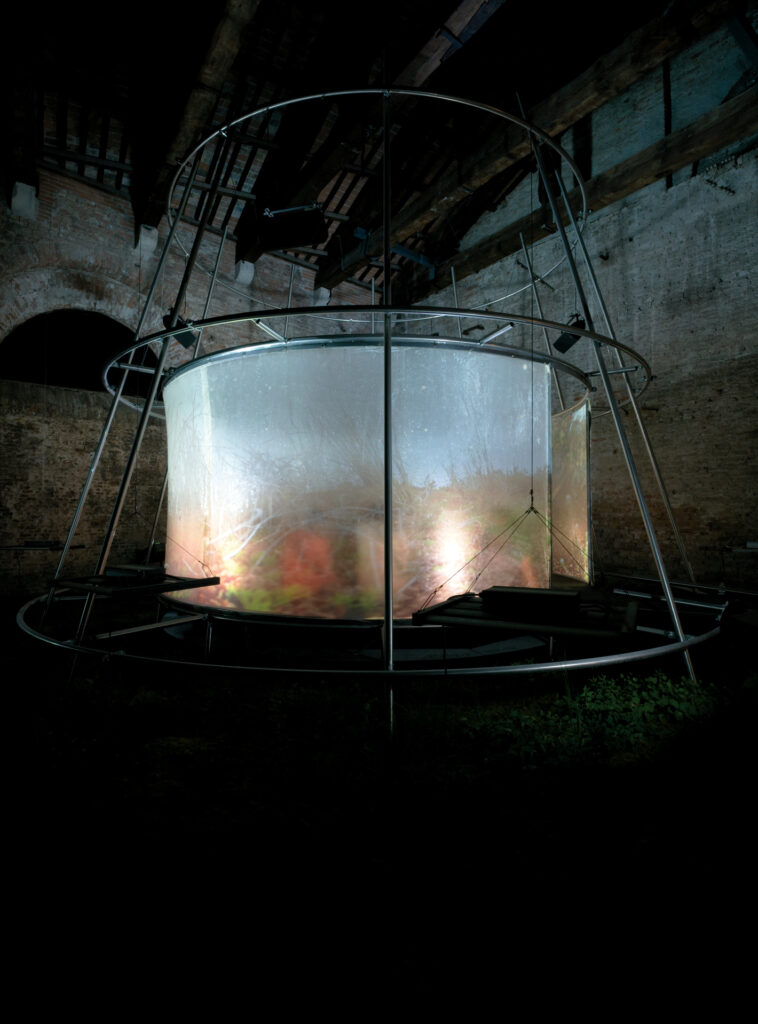
Turba Tol Hol-Hol Tol, presented at the 59th Venice Art Biennale, 2022.
Perched on the moss, the inverted cyclorama was supported by a fragile, conical frame made of thin stainless-steel profiles. The screen was made of a translucent bioplastic membrane and was accompanied by a multichannel sound system. The sphagnum moss that the frame rested on was irrigated with water that was collected, filtered, and channeled inside the pavilion. A platform was extended over the field of moss to the center of the cyclorama, where visitors could sit or lie down.
Projected on the membrane, images shot by Dominga Sotomayor in Tierra del Fuego had a tenuous appearance. Dominga frequently speaks about her fascination with capturing a record of something invisible, something fragile that vanishes. In this context, she achieved that by inserting underwater cameras in the bog. Dominga’s footage also purposefully excluded an image of a Selk’nam person because there is no “last one” to be represented. Instead, the presence of a living Selk’nam culture was made manifest through the voice of Hema’ny Molina. Hema’ny entered into a long conversation with Ariel Bustamante, who recorded and later spatialized her voice within the room. The architecture of the pavilion put all of these elements into dialogue with one another, and the sounds and images of the resisting landscape and the voices of a language being reborn traveled inside and through the boundaries of the translucent cylinder.
Throughout the run of the exhibition, everything was always changing inside the pavilion. The moss required daily care, and the humidity the moss created inside the pavilion modified the texture and the organic composition of the membrane, resulting in unique and shifting images with each new day. As time passed, the translucent membrane eroded, and we anticipated that it would be absorbed by the sphagnum moss and later dissolve in the waters of Venice. Together, the horizonal plane of moss and the circular algae screen coexisted as a breathing expression of a language that endures and a landscape that resists. The Selk’nam language and the Patagonian peatlands share a long past, and their future—inevitably entangled—was celebrated and amplified through the living materiality of this artifact.
1 Joaquín Bascopé Julio,“Bajo tuición. Infancia y extinción en la historia de la colonización fueguina (Sentidos Coloniales II),”Corpus 1, no. 1 (2011), http://journals.openedition.org/corpusarchivos/975; https://doi.org/10.4000/corpusarchivos.975.
2 Joaquín Bascopé Julio, En un área de tránsito polar: Desde el establecimiento de líneas regulares de vapores por el estrecho de Magallanes (1872) hasta la apertura del canal de Panamá (1914) (Villa Tehuelches: CoLibris, 2018).
3 By “techno-scientific memory,” I refer to an epistemologically selective mode of recording the present and storing it as “past.” More precisely, I refer to the processes, techniques, and practices of selective recording and storing informed by the technical characteristics of media recording devices entagled with scientific discourse. To read more, see: Wolfgang Ernst, Digital Memory and the Archive (Minneapolis: University of Minnesota Press, 2013), 55–73.
4 Matías Meza-Lopehandía y Felipe Rivera Polo, “Reconocimiento del pueblo Selk’nam: Antecedentes y análisis de los alcances legales del proyecto de ley,” Biblioteca del Congreso Nacional de Chile, January 2020, accessed August 15, 2022, https://obtienearchivo.bcn.cl/obtienearchivo?id=repositorio/10221/28264/1/BCN2020___Reconocimiento_pueblo_selk_nam.pdf.
5 The pavilion was commissioned by Ximena Moreno and produced by Juan Pablo Vergara. The architecture of the pavilion was created in collaboration with Sebastián Cruz.
6 To read more on the Mission scientifique: Paul Hyades and Joseph Deniker, Mission scientifique du Cap Horn 1882-1883, Tome 7 (Paris: Gauthier-Villars et fils, 1891).
7 For an early account of the legal constitution of the Sociedad Explotadora de Tierra del Fuego, see: Mateo Martinic, “Panorama de la colonización en Tierra del Fuego entre 1881 y 1900,” Anales del Instituto de la Patagonia 4, no. 1–3 (1973): 58–63. Arguably the most succinct documentation of the Selk’nam genocide can be found in: Nelly Iris Penazzo de Penazzo and Guillermo Tercero Penazzo, Wot’n: Documentos Del Genocidio Ona (3 Volumes) (San Telmo: Ediciones Arlequín de San Telmo, 1995).
8 For a thorough study on the photographic work of Martin Gusinde in the context of the history of ethnographic photography, see: Marisol Palma Behnke, Fotografías de Martin Gusinde en Tierra del Fuego (1919-1924): La Imagen material y receptiva (Santiago de Chile: Ediciones Universidad Alberto Hurtado, 2013). Palma Behnke’s work focuses on Deborah Poole’s analysis of the visual economy on Andean cultures. See: Deborah Poole, Vision, Race, and Modernity: A Visual Economy of the Andean Image World (Princeton, NJ: Princeton University Press, 1997).
9 Martin Gusinde, Urmenschen im Feuerland: Vom Forscher zum Stammesmitglied (Berlin: Paul Zsolnay Verlag, 1946).
10 Berliner Phonogramm-Archiv – Historische Klangdokumente/Historical Sound Documents VII, Martin Gusinde.
11 Martin Gusinde and Victor Lebzelter, Die Feuerland Indianer: Ergebnisse meiner vier Forschungsreisen in den Jahren 1918 bis 1924, unternommen im Auftrag des Ministerio de instrucción pública de Chile. Band I. Die Selk’nam. Vom Leben und Denken eines Jägervolkes auf der Großen Feuerland-Insel (Vienna: Verlag d. Internat. Zeitschrift Anthropos, 1931).
12 For an example of the impact of Gusinde’s images on contemporary Latin American art, see: Ronald Kay, Del Espacio de Acá: Señales para una Mirada Americana (Santiago de Chile: Ediciones Metales Pesados, 1980).
13 Robert Lehmann-Nitsche, Estudios antropológicos sobre los Onas: (Tierra del Fuego) (Buenos Aires: Imprenta y Casa Editora “Coni,” 1927), 57. (My translation.)
14 Väinö Auer, Results of the Finnish Expedition to Tierra Del Fuego in 1928-1929 (Vol. 1 and 2) (Helsinki: Societas geographica fenniae, 1934). I would like to thank Hans Joosten and Susanne Abel from the Greifswald Moor Centrum and the Peat Library for sharing this reference with me. To read more on Auer’s relationship to Finnish nationalism in the 1930s, see Laura Hollsten, “National History and Big History: Väinö Auer, the Finnish Nationalist and the Global Environmentalist,” in Locating the Global: Spaces, Networks and Interactions from the Seventeenth to the Twentieth Century, ed. Holger Weiss (Berlin: De Gruyter Oldenbourg, 2020), 359–78.
15 Kaarlo Hildén, “Zwei Indianerschädel aus Feuerland,” in Väinö Auer, Results of the Finnish Expedition to Tierra Del Fuego in 1928-1929 (Vol. 2) (Helsinki: Societas geographica fenniae, 1934), 1–50.
16 For a recent critical revision of Lipschutz’s work, read: John Stegeman, “Double Bind: Alejandro Lipschutz and the Failure of Transnational Indigenismo in Chile,” The Americas 79, no. 3 (2022): 491–519.
17 Alejandro Lipschutz, “Los últimos fueguinos: transculturación y desculturación, extinción y exterminación,” Genus 18, no. 1/4 (1962): 89–115. To read more, see: Alejandro Lipschutz, Cuatro conferencias sobre los Indios Fueguinos (Santiago de Chile: Imprenta Universitaria, 1950).
18 For an earlier publication showing the photographic investigation, see: Alexander Lipschutz, Grete Mostny, Hans Helfritz, Fidel Jeldes, and Margaret Lipschütz, “Physical Characteristics of Fuegians: An Analysis Aided by Photography,” American Journal of Physical Anthropology 5, no. 3 (September 1947): 295–321.
19 Anne Chapman and Ana Montes de Gonzales, The Ona People: Life and Death in Tierra del Fuego, color film, 55 minutes, 1977. See also: Anne Chapman, Drama and Power in a Hunting Society: The Selk’nam of Tierra del Fuego (Cambridge, UK: Cambridge University Press, 1982). Camila Marambio and Hema’ny Molina have made a critical analysis of Anne Chapman’s work. See: Hema’ny Molina Vargas, Camila Marambio, and Nina Lykke, “Decolonising Mourning: World-Making with the Selk’nam People of Karokynka/Tierra del Fuego,” Australian Feminist Studies 35, no. 104 (2020): 186–201.
20 Anne Chapman, “Ángela Loij, la ultima selk’nam,” Journal de la Société des Américanistes 62 (1973): 232–34.

